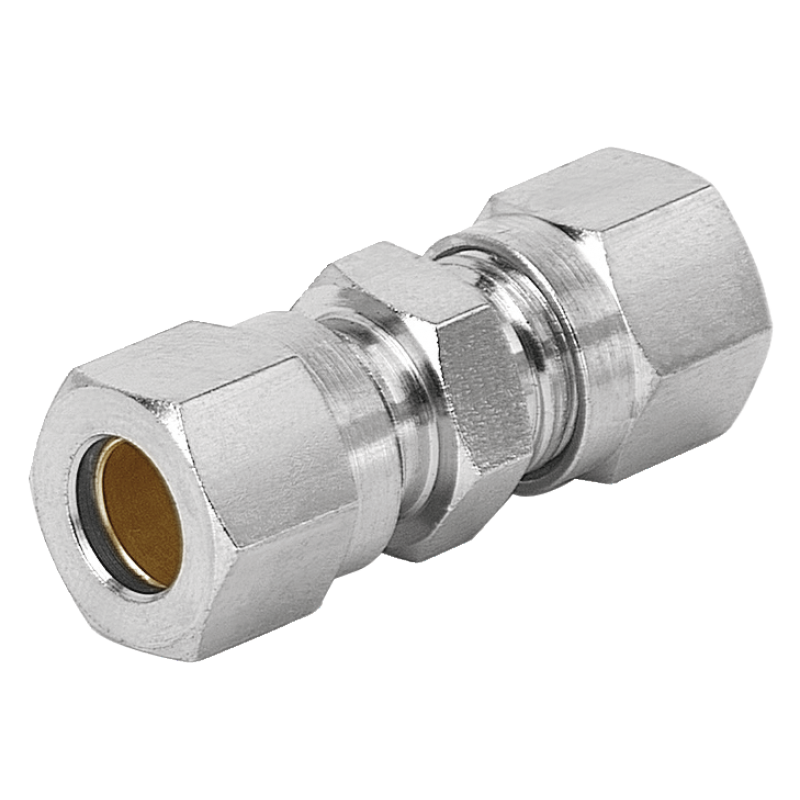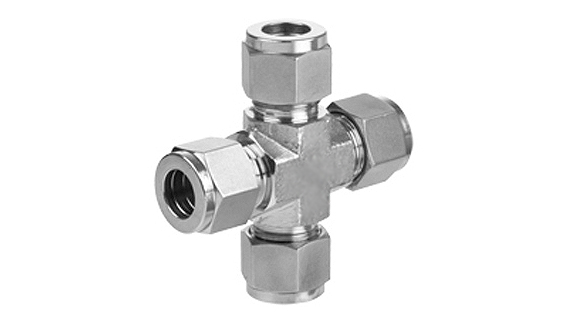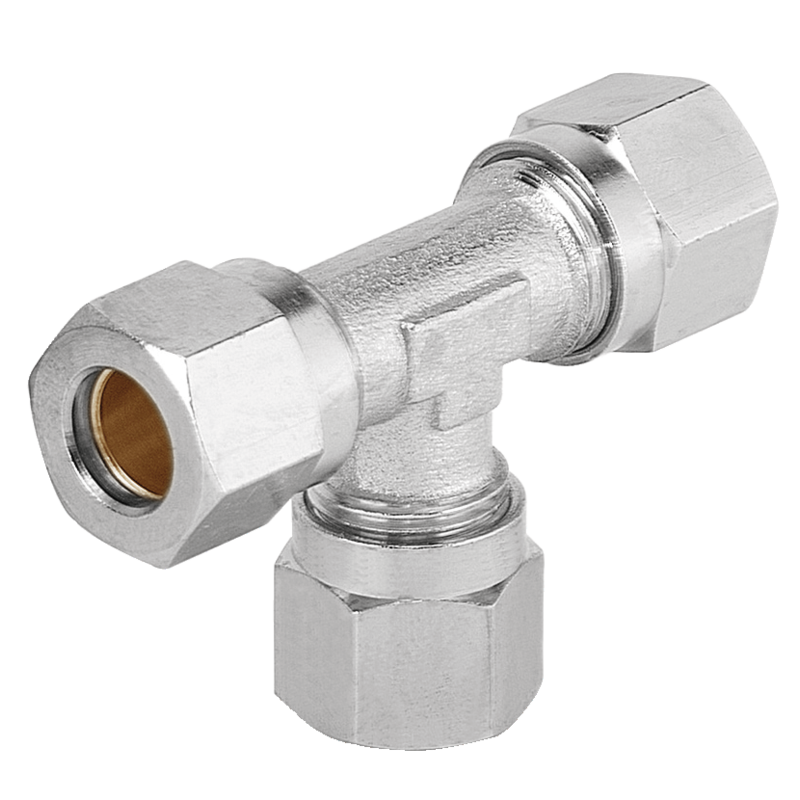Compression fittings are critical components in pneumatic and hydraulic systems, designed to create secure connections between pipes and tubes. However, one of the most common and frustrating issues you may encounter is leaks at these fittings. Leaks not only lead to inefficiencies and increased operational costs but can also pose safety risks in certain applications. Understanding the reasons behind leaks in compression fittings is essential for maintaining the integrity of your systems and ensuring optimal performance. In this article, I will delve into the common causes of leaks in compression fittings, how to prevent them, and the steps to take if you encounter this issue.
Table of Contents
ToggleWhat Are Compression Fittings and How Do They Work?
Compression fittings are mechanical devices used to join two pieces of tubing or pipe. They consist of several key components: the fitting body, a compression nut, and a ferrule (or ring). When the compression nut is tightened, it compresses the ferrule against the tubing, creating a seal that prevents fluid or gas from leaking out. The effectiveness of this seal relies on several factors, including the quality of the fitting, the materials used, and the installation technique.
The principle behind compression fittings is relatively straightforward. As the nut is tightened, the ferrule deforms slightly, gripping the tubing tightly. This deformation creates a mechanical seal that is resistant to pressure and vibration. However, if any of the components are not functioning correctly or if the installation is not performed properly, leaks can occur.

What Are the Common Causes of Leaks in Compression Fittings?
Leaks in compression fittings can arise from various issues. Here are some of the most common causes:
1. Improper Installation
One of the leading causes of leaks is improper installation. If the fitting is not tightened correctly, it may not create a proper seal. Over-tightening can damage the ferrule or the tubing, while under-tightening can leave gaps that allow fluid to escape. It’s crucial to follow the manufacturer’s guidelines for installation and use the appropriate tools to achieve the correct torque.
2. Damaged or Worn Components
Over time, components such as the ferrule or the fitting itself can become damaged or worn, compromising the seal. Common signs of wear include scratches, dents, or corrosion. These imperfections can prevent the fitting from sealing properly, leading to leaks. Regular inspections of your fittings for signs of damage are essential, and any worn components should be replaced promptly.
3. Incompatible Materials
Material compatibility is crucial when selecting compression fittings. Using materials that are not compatible with each other can lead to corrosion, which weakens the fitting and can cause leaks. For example, if you use a brass fitting with a copper tube, the two metals may react negatively, leading to degradation over time. Always ensure that the materials of your fittings and tubing are compatible with each other and with the fluids they will carry.
4. Excessive Pressure or Temperature
Every compression fitting has a specified pressure and temperature rating. Operating outside these limits can compromise the seal. Excessive pressure can cause the ferrule to deform, while high temperatures can lead to thermal expansion, which may loosen the fitting. Always adhere to the manufacturer’s specifications regarding pressure and temperature to prevent leaks.

How Does Improper Installation Lead to Leaks?
Proper installation is critical for ensuring a leak-free connection. If you over-tighten a compression fitting, you risk damaging the ferrule or the tubing, which can lead to leaks. Conversely, if the fitting is under-tightened, it may not create enough pressure to form a proper seal.
To install compression fittings correctly, follow these steps:
- Prepare the Tubing: Ensure that the tubing is cut cleanly and is free of burrs or debris. A clean cut allows for a better seal.
- Insert the Ferrule: Slide the ferrule onto the tubing before inserting it into the fitting body.
- Tighten the Nut: Hand-tighten the compression nut onto the fitting body. Then, use a wrench to tighten it further, following the manufacturer’s torque specifications. Avoid over-tightening, as this can damage the components.
- Check for Leaks: After installation, test the fitting under pressure to ensure there are no leaks.
What Role Do Damaged or Worn Components Play in Leaks?
Wear and tear can significantly affect the integrity of compression fittings. Over time, the ferrule can become deformed, or the fitting may develop scratches or dents. These imperfections can prevent the fitting from sealing properly, leading to leaks.
To mitigate this issue, regularly inspect your fittings for signs of damage. Look for:
- Scratches or Dents: These can compromise the sealing surface.
- Corrosion: This is particularly important in environments where fittings are exposed to moisture or corrosive substances.
- Deformation: If the ferrule appears flattened or misshapen, it may not create a proper seal.
If you notice any of these signs, replace the damaged components immediately to prevent leaks.
Why Is Material Compatibility Important for Compression Fittings?
Material compatibility is crucial when selecting compression fittings. Using incompatible materials can lead to corrosion, which weakens the fitting and can cause leaks. For instance, if you use a brass fitting with a copper tube, the two metals may react negatively, leading to degradation over time.
To ensure material compatibility:
- Consult Manufacturer Guidelines: Always refer to the manufacturer’s specifications for recommended materials.
- Consider the Fluid: Ensure that the materials used for fittings and tubing are compatible with the fluids they will carry. For example, certain plastics may degrade when exposed to specific chemicals.
By ensuring that your materials are compatible, you can significantly reduce the risk of leaks.
How Do Pressure and Temperature Affect Compression Fittings?
Every compression fitting has a specified pressure and temperature rating. Operating outside these limits can compromise the seal. For example, excessive pressure can cause the ferrule to deform, while high temperatures can lead to thermal expansion, which may loosen the fitting.
To prevent issues related to pressure and temperature:
- Monitor Operating Conditions: Keep an eye on the pressure and temperature levels to ensure they remain within the recommended limits.
- Use Pressure Relief Valves: In systems where pressure spikes are common, consider installing pressure relief valves to protect your fittings.
By adhering to the specified limits, you can maintain the integrity of your compression fittings and prevent leaks.

What Are the Best Practices for Preventing Leaks in Compression Fittings?
Preventing leaks in compression fittings involves a combination of proper installation, regular maintenance, and material selection. Here are some best practices to follow:
- Follow Installation Guidelines: Always adhere to the manufacturer’s instructions for installation and tightening.
- Inspect Regularly: Conduct routine inspections of your fittings to check for signs of wear or damage.
- Choose Compatible Materials: Ensure that the materials used for fittings and tubing are compatible with each other and the fluids they will carry.
- Monitor Operating Conditions: Keep an eye on the pressure and temperature levels to ensure they remain within the recommended limits.
- Use Thread Sealants Wisely: If applicable, use thread sealants or Teflon tape on threaded connections to enhance sealing, but avoid using them on compression fittings as they can interfere with the compression seal.
How Can You Troubleshoot Leaks in Compression Fittings?
If you discover a leak in your compression fittings, follow these steps to troubleshoot the issue:
- Identify the Source: Check the fitting for visible signs of leakage. Look for wet spots or drips around the connection.
- Check Tightness: Use a torque wrench to ensure the fitting is tightened to the manufacturer’s specifications. If it’s loose, tighten it carefully.
- Inspect Components: Examine the ferrule and the fitting for any signs of damage or wear. Replace any components that appear compromised.
- Evaluate Material Compatibility: Ensure that the materials used are compatible. If not, consider replacing the fitting or tubing with compatible options.
- Test Under Pressure: If the leak persists, test the system under pressure to identify the exact location of the leak.
When Should You Consider Professional Help for Compression Fitting Issues?
If you’ve tried troubleshooting and the leak continues, it may be time to seek professional assistance. Signs that indicate the need for expert help include persistent leaks despite tightening, visible damage to fittings, or if you’re unsure about the compatibility of materials. Consulting with experts in pneumatic systems can provide you with tailored solutions and ensure the integrity of your system.
Conclusion
Understanding why compression fittings leak is essential for maintaining the efficiency and safety of your pneumatic systems. By recognizing the common causes of leaks and implementing best practices for installation and maintenance, you can significantly reduce the risk of leaks. If you encounter persistent issues, don’t hesitate to reach out for professional advice. Your pneumatic system deserves the best care, and I’m here to help you ensure it operates smoothly and efficiently!

